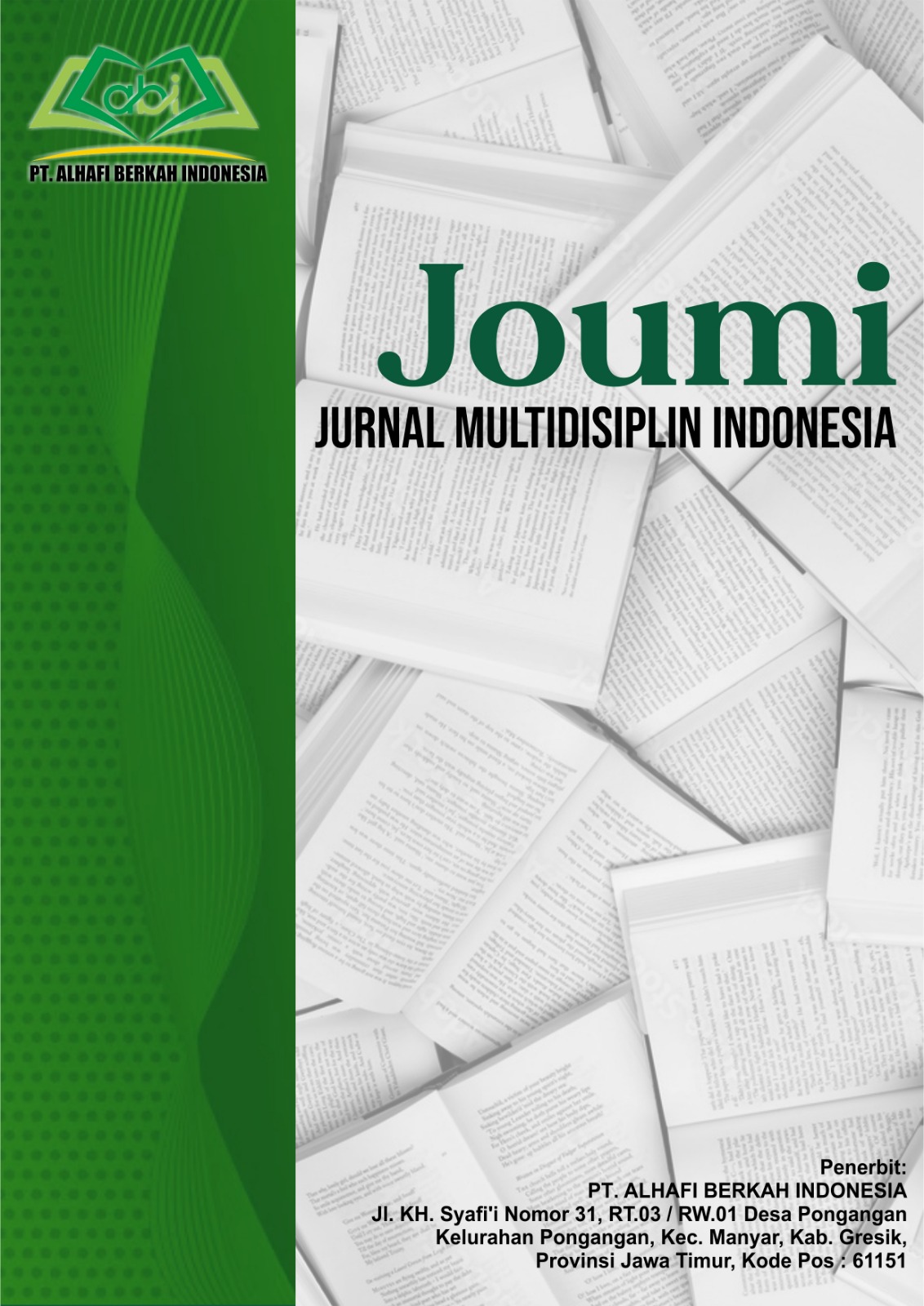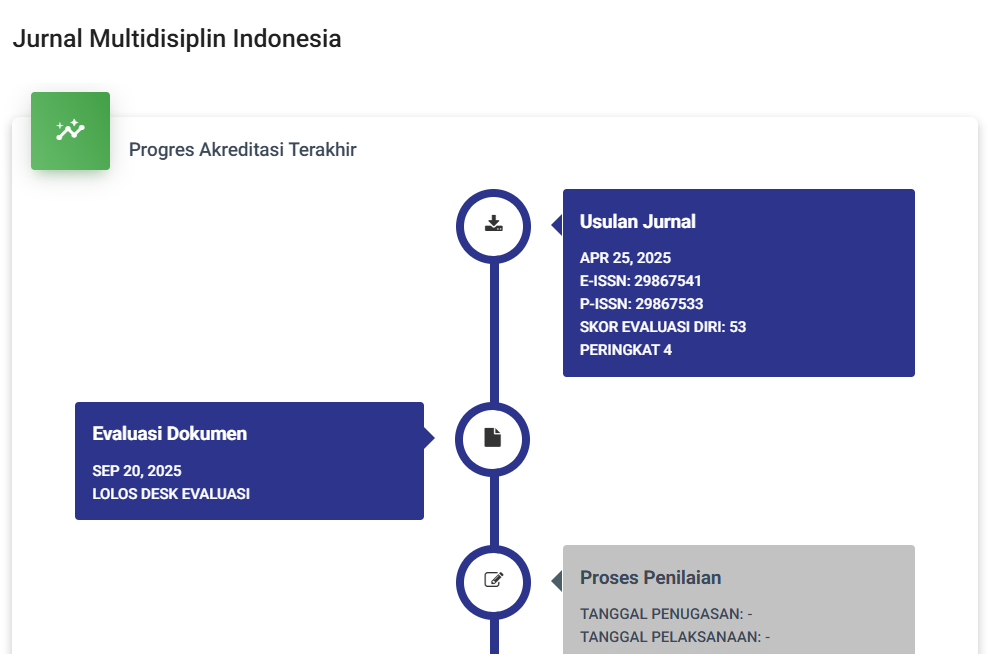Factors Affecting the Distribution of Consumer Segment Financing and Its Implications on the GRDP of the Financial Services and Insurance Sector as well as MSME Empowerment in Indonesia
DOI:
https://doi.org/10.62007/joumi.v3i2.489Keywords:
Number of banks, digital transactions, inflation, third party funds (DPK), financing, MSMEs, GRDPAbstract
Examining the variables affecting consumer financing distribution and its effects on the GDP of the insurance and financial services industries, as well as the empowerment of Micro, Small, and Medium-Sized Enterprises (MSMEs) in Indonesia, are the goals of this study. Panel data regression analysis is the methodology employed in this study. The data utilized consist of panel data from 15 provinces with the best performance in Islamic bank financing, based on reports registered at the Financial Services Authority (OJK), encompassing a ten-year span from 2014–2023. The study's findings show that the distribution is positively and significantly impacted by Third Party Funds (DPK), inflation, the number of Islamic banks, and digital transactions of Islamic financing for the consumer segment. Furthermore, the distribution of Islamic financing positively influences the GRDP of the financial services and insurance sector and MSME empowerment in Indonesia.
References
Abdullah Saed. (2008). Bank Islam Dan Bunga. Jakarta: Pustaka Pelajar.
Afzalur Rahman. (1995). Doktrin Ekonomi Islam jilid 2. Dana Bakti Wakaf.
Ahmad Djunaidi. Menuju Wakaf Produktif. Jakarta: Mumtaz Publishing.
Anton Bawono, ett, all. (2021). The Analysis of Inflation Effect, Interest Rate and Exchange Rate on Financing: Third-Party Funds as an Intervening Variable of Sharia Banking in Indonesia. Al-Uqud: Journal of Islamic Economics, Volume 5, issues Juli.
Anton Sukarna & Musa Hubeis. (2024). Peran Bank Syariah Dalam Pengembangan UMKM Berdaya Saing di Indonesia. Bogor: IPB Press.
Fekri Ali Shawtari & ett all. (2023). Financial development and economic diversification in Qatar: does Islamic finance matter?, Journal of Islamic Accounting and Business Research.
Frederic S. Miskhin. (2008). Ekonomi Uang Perbankan Dan Pasar Keuangan Edisi 8. Jakarta: Salemba Empat.
Hajer Zarrouk. (2017). Financial Development, Islamic Finance And Economic Growth: Evidence Of The UAE, Journal of Islamic Accounting and Business Research, vol 8 no 1.
Hendri Tanjung dan Abrista Devi. (2018). Metodologi Penelitian Ekonomi Islam. Gramata Publishing.
Khaled Elmawazini, Khiyar Abdullah Khiyar, and Asiye Aydilek. (2020). Types Of Banking Institutions And Economic Growth. International Journal of Islamic and Middle Eastern Finance and Management, Vol. 13 No. 4.
Mohammed Ayoub Ledhem and Mohammed Mekidiche. (2022). Islamic Finance And Economic Growth: The Turkish Experiment, ISRA International Journal of Islamic Finance, Vol. 14 No. 1.
Muhamad Abduh, Mohd Azmi Omar. (2012). Islamic Banking And Economic Growth: The Indonesian Experience. International Journal of Islamic and Middle Eastern Finance and Management, Vol. 5 No. 1.
Muhamad Iqbal Surya Pratikto & Ririn Tri Ratnasari. (2017). Third Party Funds, Number Of Capital, And Non-Performing Financing To The Number Of Mudharabah Financing In Indonesia’s Sharia Banking. Atlantis Press.
Nejib Hachicha & Amine Ben Amar. (2015). Does Islamic Bank Financing Contribute To Economic Growth? The Malaysian Case. International Journal of Islamic and Middle Eastern Finance and Management, Vol. 8 No. 3.
Nurul Huda, dkk. (2008). Ekonomi Makro Islam. Jakarta: Kencana Pranada Media.
Nurul Susisati, ett all. (2022). Determinants Of Increasing The Number Of Third-Party Funds In Shariah Banking. International Journal of Health Sciences, 6(S8), 1965–1976.
Putri Rona Wulandari Br Kaban & Selamat Kaban. (2023). Relationship of Third Party Funds and Financing on the Profitability of Islamic Banks in Indonesia For the 2017-2021 Period. Muhasabatuna: jurnal Akuntansi dan keuangan Islam, Volume 5 Issue 1, Juni.
Rani Salamah Marinda, ett all. (2020). Investigating The Effect Of Total Assets, Financing, And Third-Party Funds On Islamic Banking Revenue In Indonesia. Jurnal Ekonomi Pembangunan, Volume 18 (2): 85-94, December.
Ryanda Al Fathan & Tika Arundina. (2019). Finance-Growth Nexus: Islamic Finance Development In Indonesia. International Journal of Islamic and Middle Eastern Finance and Management, Vol. 12 No. 5.
Sadono Sukirno. (2000). Makroekonomi Modern (Perkembangan Pemikiran Dari Klasik Hingga Keynessian Baru). Jakarta: Rajawali Press.
Suhardi M. Anwar, ett all. (2020). Islamic Bank Contribution To Indonesian Economic Growth. International Journal of Islamic and Middle Eastern Finance and Management, Vol. 13 No. 3.
Unggul Priyadi ett all. (2021). Determinants Of Credit Risk Of Indonesian Sharīʿah Rural Banks. ISRA International Journal of Islamic Finance, Vol. 13 No. 3.
Yazdan Gudarzi Farahani and Masood Dastan. (2013). Analysis Of Islamic Banks’ Financing And Economic Growth: A Panel Cointegration Approach. International Journal of Islamic and Middle Eastern Finance and Management, Vol. 6 No. 2.
Downloads
Published
How to Cite
Issue
Section
License
Copyright (c) 2025 Nani Almuin, Pudji Astuty

This work is licensed under a Creative Commons Attribution-ShareAlike 4.0 International License.







